As interest in native plants grows, so does the desire for finding those that are not mowed to the ground by deer. Natives are an especially popular choice for large naturalized plantings, just the sort of environment where deer are likely to be a problem. After all, part of the idea of using natives is to blend the cultivated landscape into the wild landscape, where conditions are quite different than in a protected garden area.
Below are some of the most stunning native wildflowers that are reliably deer-resistant. A handful of these are adaptable enough to grow in almost any part of the U.S., while others are region-specific.
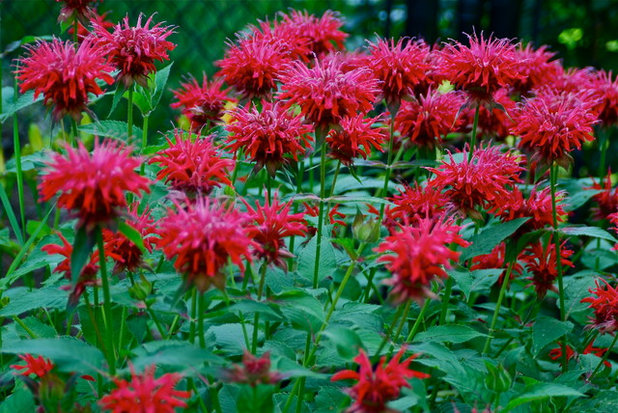 1. Scarlet Beebalm
1. Scarlet Beebalm(
Monarda didyma)
Native from Ohio east to New Jersey and south to Georgia and Tennessee
Deer don’t give it a second look, but this eastern U.S. native is one of the best plants for attracting hummingbirds. It erupts from the ground each spring and grows up to 5 feet tall before spreading its crimson flowers. Dwarf cultivars are also available.
Beebalm grows best in the central and eastern half of the country.
Where it will grow: Hardy to minus 30 degrees Fahrenheit, or minus 34 degrees Celsius (USDA zones 4 to 9; find your zone)
Light requirement: Full sun or dappled shade
Water requirement: Moderate
Mature size: 2 to 5 feet tall, depending on the variety
Photo by wplynn
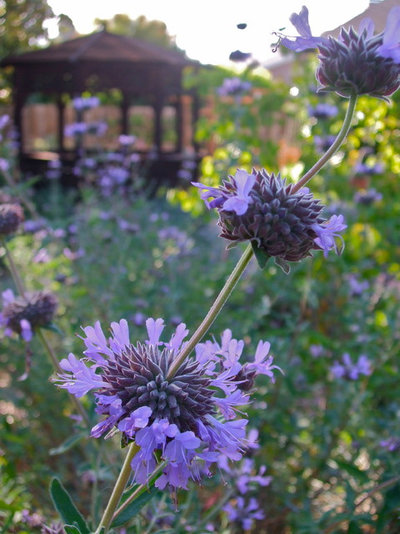
Edger Landscape Design
2. Cleveland Sage(
Salvia clevelandii)
Native to Southern California and northern Baja California, Mexico
Virtually all salvias (sages) are deer-resistant, but this is one of the standout native representatives. Whorls of purple-blue flowers wave on wiry stalks above a mound of gray-green foliage. The flowers bloom repeatedly throughout the summer.
This is one of dozens of native salvias found in the western U.S. and is best adapted to arid regions. A small number of salvias are native to the eastern U.S. as well, such as the petit lyreleaf sage (
S. lyrata, zones 6 to 9)
Where it will grow: Hardy to 10 degrees Fahrenheit, or minus 12 degrees Celsius (zones 8 to 11)
Light requirement: Full sun
Water requirement: Low
Mature size: 3 to 5 feet tall and 5 to 8 feet wide
See how to grow Cleveland sage
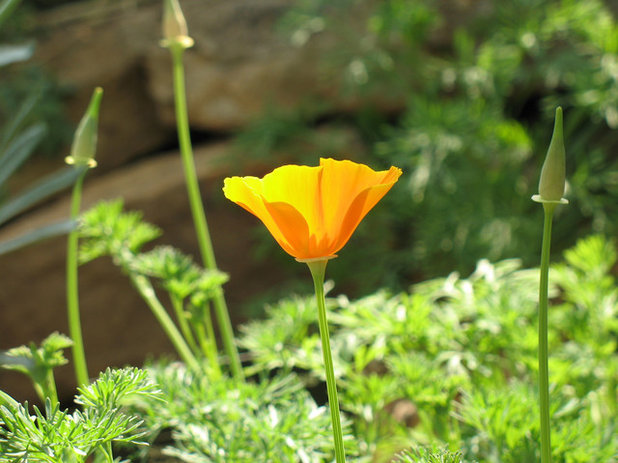
Missouri Botanical Garden
3. California Poppy(
Eschscholzia californica)
Native to California and Oregon
The vivid orange blossoms of California poppy are quite striking when massed in front of the electric blue flowers of Cleveland sage. This western native also boasts soft gray foliage and will often self-seed in a wildflower meadow.
California poppy grows best in the western U.S. but is adaptable throughout most of the country. It is a short-lived perennial but is often grown as an annual outside its native range.
Where it will grow: Hardy to minus 10 degrees Fahrenheit, or minus 23 degrees Celsius (zones 6 to 10)
Light requirement: Full sun
Water requirement: Low
Mature size: 12 to 18 inches tall and wide
See how to grow California poppy
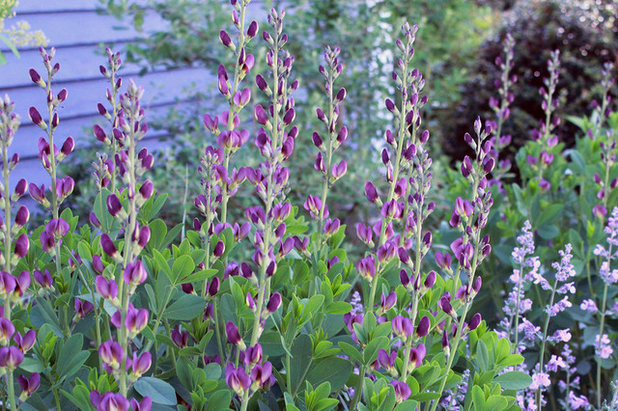 4. Blue Wild Indigo
4. Blue Wild Indigo(
Baptisia australis)
Native in areas from the central Great Plains to the southeastern and northeastern U.S.
This eastern native is becoming more and more common in the nurseries. Blue wild indigo is very long-lived, sending up its stalks of lush oval leaves every year for a decade or more (unlike many perennials that peter out after a few years). It often has stunning indigo-colored flower spikes up to a foot long, or longer, though yellow and white varieties are also available.
Where it will grow: Hardy to minus 40 degrees Fahrenheit, or minus 40 degrees Celsius (zones 3 to 9)
Light requirement: Full sun
Water requirement: Low
Mature size: 3 to 4 feet tall and wide
See how to grow blue wild indigo
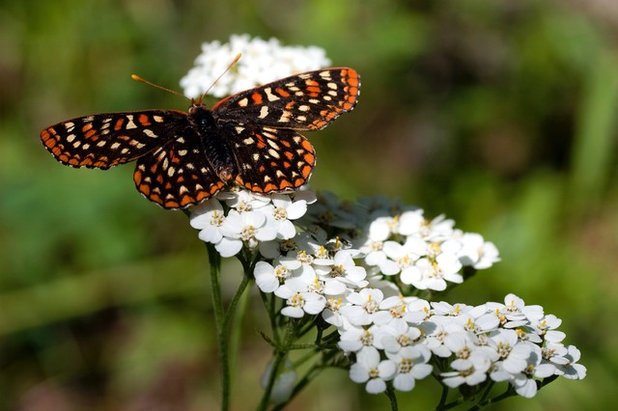 5. Common Yarrow
5. Common Yarrow(
Achillea millefolium)
Native throughout California except deserts; also native to many temperate regions of the Northern Hemisphere in Asia, Europe and North America
Common yarrow is a versatile species that is native to almost every state, and its flat-topped flowers make an attractive landing pad for butterflies. Its fern-like, aromatic foliage hugs the ground and spreads into a green carpet that is capable of handling modest foot traffic. Yarrow often self-seeds and can become a bit rampant in ideal growing conditions.
Where it will grow: Hardy to minus 30 degrees Fahrenheit, or minus 34 degrees Celsius (zones 3 to 9)
Light requirement: Full sun or light shade
Water requirement: Low
Mature size: The foliage grows up 6 inches tall; the flowers reach up to 3 feet tall.
See how to grow common yarrow
Photo by Thomas Spann
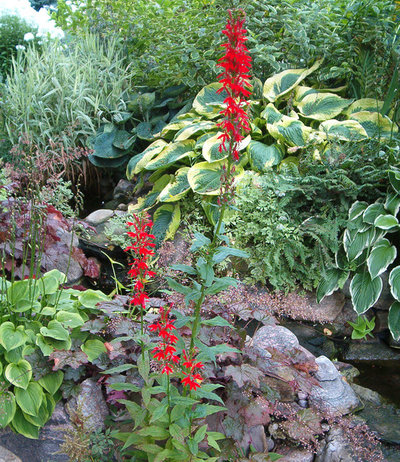
Flowers in the Front Yard
6. Cardinal Flower(
Lobelia cardinalis)
Native from Minnesota south to Texas and all regions east; also native to parts of the Southwest and California
Native to wetlands and stream banks throughout the eastern U.S., cardinal flower is one of the most intensely colored native species; some varieties have burgundy foliage to go with the crimson blossoms. It is a good choice for a bog garden but grows equally well in a perennial border with average moisture. Hummingbirds find cardinal flower irresistible.
Where it will grow: Hardy to minus 40 degrees Fahrenheit, or minus 40 degrees Celsius (zones 3 to 9)
Light requirement: Light shade
Water requirement: Moderate
Mature size: 3 to 4 feet tall
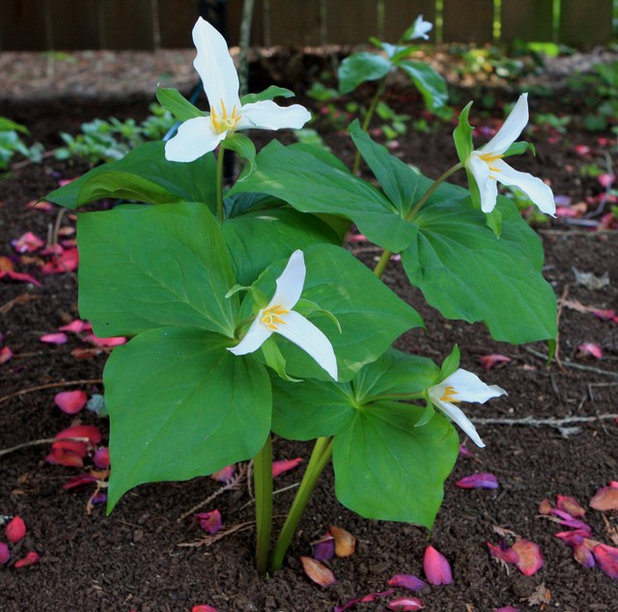
J Brew
7. Trillium(
Trillium spp.)
Native throughout North America
Trilliums are found in forests throughout North America. They are very long-lived but slow to flower — it can take seven years when they are grown from seed. They eventually spread into a clump and add their elegant white flowers to woodland gardens in spring.
There are distinct varieties native to different regions. In the West, try Pacific trillium (
T. ovatum,
zones 5 to 8, shown here); in the East, try white trillium (
T. grandiflorum, zones 4 to 9).
Where it will grow: Varies by species
Light requirement: Shade
Water requirement: Moderate
Mature size: 12 to 18 inches tall
See how to grow Pacific trillium
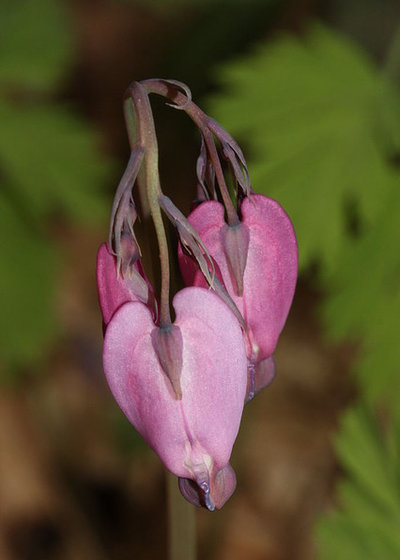 8. Bleeding Heart
8. Bleeding Heart
(
Dicentra spp.)
Native throughout North America
The bleeding heart most commonly found in nurseries originates in Asia, though native-plant nurseries often carry the several species native to North America. All have similar soft, lacy foliage and flowers that resemble dangling heart-shaped ornaments. They are dainty woodland plants that work well with trilliums.
In the East, try wild bleeding heart (
D. eximia, zones 3 to 9); in the West, try western bleeding heart (
D. formosa,
zones 4 to 8), shown here.
Where it will grow: Varies by species
Light requirement: Dappled shade
Water requirement: Moderate
Mature size: 12 to 18 inches tall
See how to grow wild bleeding heart | See how to grow western bleeding heart
Photo by Wsiegmund
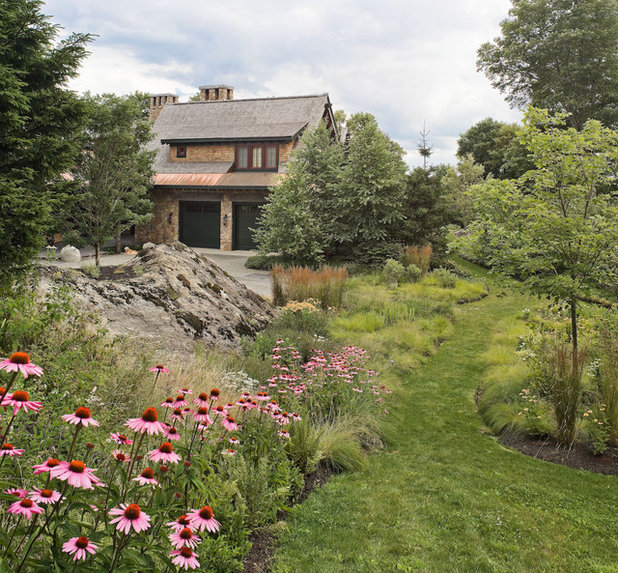
Wagner Hodgson
9. Purple Coneflower(
Echinacea purpurea)
Native from Florida and northeast Texas north to Virginia in the east and Iowa in the west
Coneflower is a classic border plant that’s native to the central and eastern U.S. Pale purple or pink flowers attract herds of butterflies, and the roots are the source of echinacea extract, a popular herbal supplement that is thought to boost immunity.
Purple coneflower grows well in almost every region of the country.
Where it will grow: Hardy to minus 40 degrees Fahrenheit, or minus 40 degrees Celsius (zones 3 to 10)
Light requirement: Full sun
Water requirement: Low
Mature size: 2 to 3 feet tall
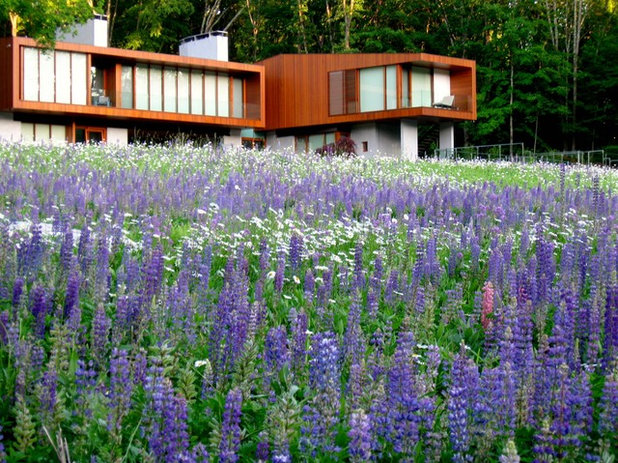
Designing Eden llc
10. Lupine(
Lupinus spp.)
Native throughout the U.S.
There are native lupines to be found in every corner of the country, most of which bear long stalks of blue or purple flowers. They come in a wide variety of other colors, but be aware that many of the lupines in nurseries are non-native hybrids. The true native lupines vary considerably in size, from 6-inch annuals to 4-foot shrubs.
In the East, try wild lupine (
L. perennis,
zones 2 to 10), a 2-foot-tall perennial. In the West, try yellow bush lupine (
L. arboreus,
zones 7 to 10), a 4-foot shrub-type lupine with yellow flowers. The California Invasive Plant Council (Cal-IPC) warns against planting
L. arboreus outside its native range, which is Sonoma County south, as it can become invasive in coastal dunes of Northern California.
Where it will grow: Varies by species
Light requirement: Full sun to partial shade, depending on species
Water requirement: Varies by species
Mature size: Varies by species
Caution: Plants in the
Lupinus genus, and particularly their seeds, can be toxic to humans and livestock if ingested.
See how to grow wild lupine





